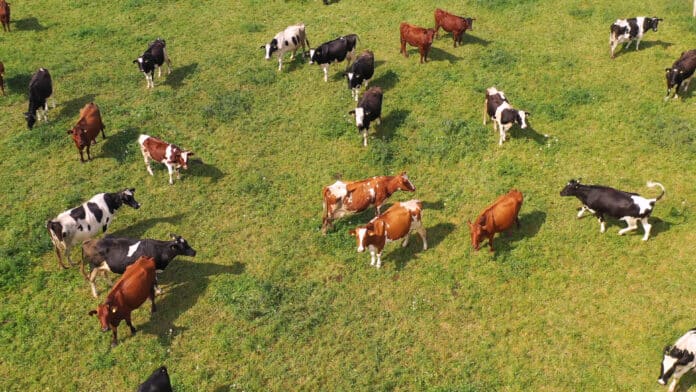STOCKTON, Mo. – “As temperatures increase and cattle dissipate heat by standing in ponds and other water sources be on the lookout for foot rot,” says Patrick Davis MU Extension Livestock Field Specialist. Foot rot can negatively impact cattle operation performance and profitability. Below, Davis will discuss foot rot and how to reduce the negative impact on the cattle operation.
“Foot rot is caused by causative bacteria entering the compromised skin or hoof wall integrity,” says Davis. Moisture, injury, disease, and or nutrient deficiencies can lead to compromised skin or hoof wall integrity.
“Since trace minerals zinc, selenium and copper are important for skin and hoof wall integrity, deficiencies in these areas can increase the incidence of foot rot,” says Davis. Davis urges cattle producers to provide adequate level of these minerals free choice to their cattle.
“Combination of skin or hoof irritation by rough surfaces and cattle standing in the pond or other muddy areas can increase the incidence of foot rot,” says Davis. Davis urges cattle producers to reduce the time cattle are standing on rough surfaces such as rocks, gravel, and concrete to reduce the incidence of foot rot. Furthermore, Davis urges cattle producers to implement heat stress reduction strategies to reduce time cattle are standing in the mud and pond to help reduce the incidence of foot rot.
“Lameness is a typical symptom of cattle foot rot,” says Davis. This symptom is brought on by other issues which include swelling and redness of interdigital tissue and adjacent coronary band. There will be a foul odor associated with foot rot which is necrotic lesions in the interdigital space. Left untreated the infection continues with swelling around both digits and the hairline of the hoof causing separation of the claw.
“Since cattle lameness can influence performance and operation bottom line it is key to identify and treat foot rot immediately,” says Davis. Davis urges cattle producers to consult a veterinarian to develop a plan for understanding the symptoms of foot rot and proper treatment protocol. Treatment options should begin with problem identification, cleaning the foot and providing topical antimicrobial treatment. Pain relief might be recommended by the veterinarian. Improvement should be seen in 3 to 4 days. If not consult a veterinarian for advice on treatment for more severe cases.
For more information on cattle foot rot contact your local MU Extension Livestock Field Specialist.















